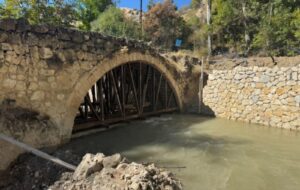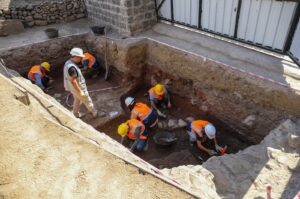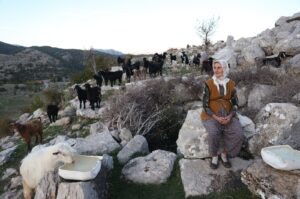Istanbul has seen a decline in air quality over the past day, with pollution levels in 10 locations worsening from “good” to “moderate,” according to environmental monitoring data. The increase in pollution is partly attributed to desert dust from North Africa affecting the city’s air quality.
The Ministry of Environment, Urbanization, and Climate Change’s National Air Quality Monitoring Network and the Istanbul Metropolitan Municipality’s (IBB) Environmental Protection and Control Department continuously track air pollution through monitoring stations across the city. These stations provide real-time data on pollution levels in different districts.
Air quality is categorized into six levels: “good” (0-50), “moderate” (51-100), “sensitive” (101-150), “unhealthy” (151-200), “poor” (201-300), and “hazardous” (301-500).
Data from the National Air Quality Monitoring Network at 18:00 on March 15 showed that among Istanbul’s 39 monitoring stations, 22 registered as “good,” 16 as “moderate,” and one as “sensitive.”
However, today at the same time, only 12 stations reported “good” air quality, while 26 recorded “moderate” pollution and one remained at the “sensitive” level.
The most recent data from the monitoring network showed air pollution levels across different locations in the city. Areas with higher pollution levels included Göztepe D-100 (123), Tuzla (81), and Kağıthane MTHM (70). Meanwhile, Kumköy (16) and Sultangazi-1 (18) recorded the lowest pollution levels.
Similarly, data from the IBB Air Quality Monitoring Center showed a worsening trend. At 18:00 yesterday, air quality was “good” in 29 locations, “moderate” in nine, and “sensitive” in one.
By today at the same hour, “good” air quality was recorded in only 16 locations, with 22 classified as “moderate” and one as “sensitive.” The highest pollution levels were detected at D-100 (130), Tuzla (94), and Beylikdüzü (78), while Sultangazi-1 (15) and Kumköy (16) had the lowest readings.
Authorities continue to monitor the situation and advise residents, particularly those in sensitive groups, to take precautions as pollution levels fluctuate. The impact of desert dust from North Africa and other environmental factors will continue to be assessed in the coming days.




















































Be First to Comment